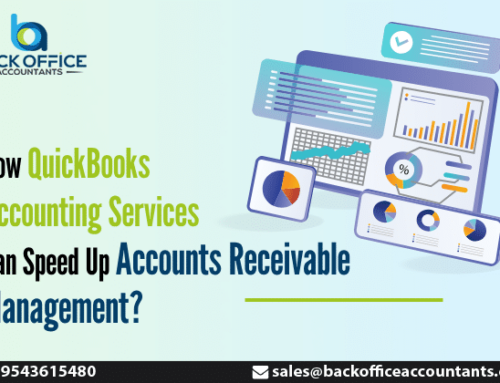A whopping 82% of the small business in the US fail due to cash flow problems that stem from poor financial management. While most businesses are aware of the importance of smooth cash flow, they falter at adequately measuring the financial well-being of the business and thus find it difficult to make the course correction.
Accounts Receivable Turnover: A Key Indicator of Financial Performance
An entity runs into cash flow problems when the cash outflow triumphs over the cash in-flow consistently, leading to financial hiccups. And nothing holds as much power as Accounts Receivable to optimize this flow which is why Accounts Receivable Turnover serves as a key indicator of a company’s financial performance.
If you are a small and medium business then measuring the Accounts Receivable Turnover ratio and taking steps to improve it consistently is an effective way for smooth cash flow and stable financial performance. But how does one improve your Accounts Turnover Ratio? Our accounting experts at Back Office Accountants are here to answer.
In this blog, we explain the Importance of Accounts Receivable Turnover for businesses and then identify 3 simple ways that can improve your Accounts Receivable Turnover for better financial performance. Read on:
Importance of Accounts Receivable Turnover:
Accounts Receivable Turnover (ART) is the ratio between the Annual credit sales and average accounts received. Here the average accounts receivable is the average of accounts receivable at the beginning and end of the year.
Higher the ART turns out, the faster a business tends to collect its receivables which means more cash at hand to pay expenses and debts. A lower ART ratio indicates lacklustre performance due to inherent problems which could be due to poor credit collection mechanisms and policies, poor credit approvals and an unstable client base (financially).
That said, a low ART need not necessarily indicate the above problems. Any business looking to improve its financial performance must calculate and compare its ART ratio with its peers and then work to identify the root cause of the dip and take necessary measures for optimization.
How to Improve Accounts Receivable Turnover?
The best thing about quantifiable metrics like ART is that they can be easily compared with your competitors in the industry. As a remote accounting firm specializing in Accounts Receivable Services, Back Office Accountants are particular about benchmarking ART ratio and this is how we set our goals and deliver results to our clients. In cases of low ART here are 3 ways that worked for us to improve and optimize the collections of our clients:
3 Simple Ways to Improve Accounts Receivable Turnover for Your Business:
Make a payment of invoice easy: The simplest and most immediate step a business can take is to simplify the payment process of the client. Late invoicing is the shortcut for late bill payments so accurate and detailed billing that is on time is the first step to simplify the process. Never make the mistake of waiting until the total outstanding amount gets higher – small payments are easier to make.
Provide and integrate multiple payment options in addition to conventional cheques and wire transfers. Now for the final nudge, sprinkle-in discount offers for early payments.
Follow-up effectively: Greater the delay, higher is the probability of the client not paying up. The majority of businesses especially SMBs go lax on follow up and do not have any standard and streamlined approach for collection management which is a mistake. We advise the business to have a standard communication plan that can spur the customers into action when the payments are due. Combining this with an automated process with clear terms and condition surely increase the collections.
Nurture strong relationships: Simplifying the invoice payment and crafting the right follow up procedures does solve the collection problems but nurturing the right customer relationships prevents these issues from happening altogether. Prompt customer servicing and communication, including small gestures, can go a long way in building strong relationships that can directly impact your collection. That said the key here is to pre-select the right customers (in case you have an option). We have detailed ways to select the right customers in our blog here.
ART indicates how many times the receivables were collected during the specific accounting period the ART is calculated. So ART measures the effectiveness of the business in turning accounts receivable in the books into the cash in the bank – an ultimate goal of any business. A quantifiable metric monitoring and optimizing ART is key for smooth cash flow and stable financial performance. If you are a business that is finding it difficult to optimize your Accounts Receivable Turnover even with the above tips then you can consider consulting or even outsourcing Accounts Receivable to a remote accounting firm like Back Office Accountants.
As one of the leading remote accounting firms in the business, Back Office Accountants specializes in Outsourced Accounts Receivable Services that deliver the best Accounts Receivable Turnover Ratio in the industry. If you are a small and medium business-facing cash flow problem and are looking to further improve your financial performance then outsourcing could be a great option and Back Office Accountants is an ideal choice.








